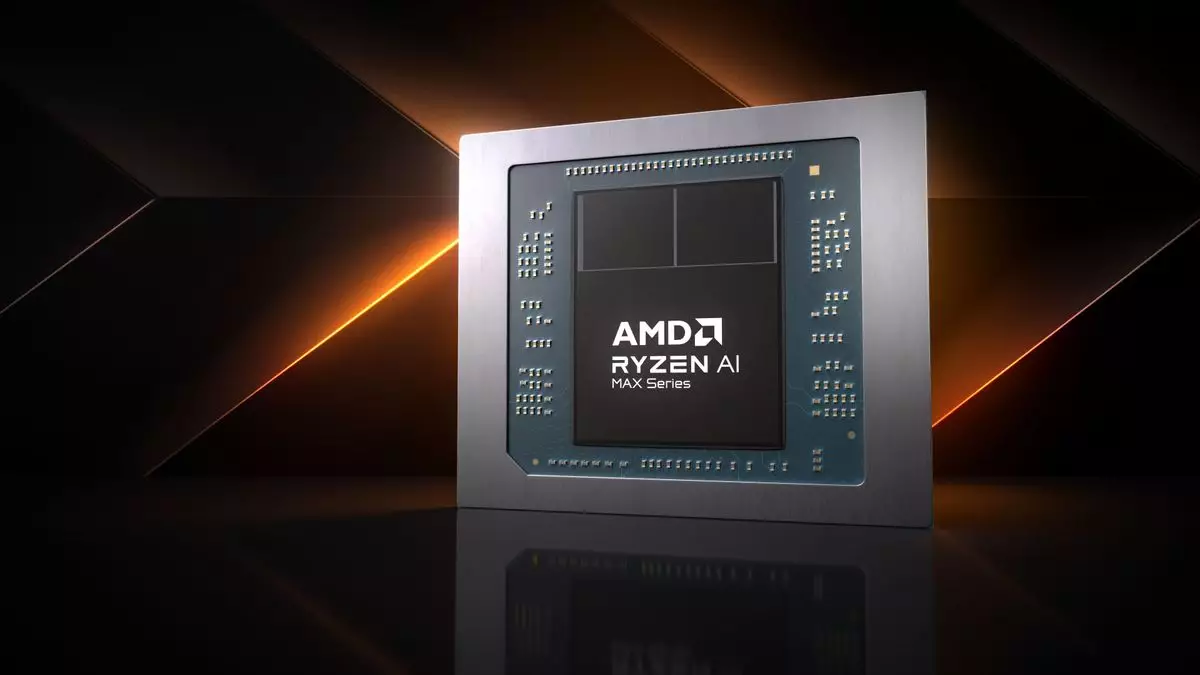AMD is set to capture attention with its next-generation APU, the Strix Halo, which boasts a significant leap in graphical capabilities and integrated processing power. Recent benchmarks from 3DMark Time Spy have surfaced, promising some insights into how this powerhouse may perform upon release. These findings create a backdrop for a deeper examination of its capabilities, comparing them with existing expectations and the current landscape of integrated graphics solutions.
The first mark of performance for the Strix Halo has come through limited testing, which yields a GPU score of 10,106 and a CPU score of 5,571. While these numbers appear competitive, it’s crucial to contextualize them. The GPU score, for instance, positions this APU roughly 2,000 points ahead of the typical scores for laptops equipped with NVIDIA’s RTX 4050, yet trails a few hundred points behind those with the RTX 4060. While such benchmarks hint at robust performance, they also highlight the limitations prevalent within integrated graphics technologies.
It’s important to understand that 3DMark, while a useful gauge of graphical prowess, does not encapsulate gaming performance in its entirety. Different gaming titles impart varying demands on GPU architecture, and hence the actual real-world performance may well differ from these preliminary numbers. A broader testing methodology using a selection of games will shed light on the Strix Halo’s capabilities beyond synthetic benchmarks.
As the industry looked forward to monumental leaps in APU performance, many speculated that AMD’s upgrades would yield performance levels resembling those of high-end discrete GPUs, like the RTX 4070. Early data now suggests that the Strix Halo may actually align more closely with the RTX 4060. This juxtaposition raises questions about AMD’s objectives for this APU and whether the enhancements in architectural design translate effectively into performance gains.
Given the increased number of graphics cores designed for this APU, the anticipation for enhanced performance was palpable. However, the reality is somewhat toned down, leading to a more cautious outlook. The disappointment is further exacerbated by AMD’s earlier suggestions regarding the potential capabilities of the chip. While integrated performance is commendable, it doesn’t break new ground in the expected ways.
The Strix Halo’s creation process was far from straightforward, as AMD reportedly underwent multiple iterations to fine-tune this complex APU. Its design, incorporating bespoke Zen 5-based CPU core chiplets, marks a significant innovation. This APU employs a novel interconnect method aimed at overcoming some longstanding power efficiency issues. Power efficiency is critical, especially in gaming laptops, as it would enable extended battery life without sacrificing performance.
Despite the efficiency ambitions, the adjustable wattage available for the Strix Halo extends up to 120 watts, presenting opportunities for powerful bursts of performance at the cost of battery life. This aspect could lead to variability in performance outputs based on thermal management capabilities, which will be crucial for end-user experience.
In the landscape of portable computing, the rising tide of powerful APUs is gaining traction. AMD’s Strix Halo stands to serve a vital role, provided it meets the benchmark industry’s varying expectations as it moves closer to its launch. As consumers increasingly demand efficient yet powerful performance for gaming and productivity tasks, AMD’s strategic decisions regarding pricing and marketing will prove instrumental.
The early performance metrics, the innovative architecture, and the emphasis on efficient power consumption position the Strix Halo as a noteworthy contender in the APU market. As excitement mounts, potential customers and industry analysts alike will keep a keen eye on the final release, eager to see how AMD turns initial benchmarks into tangible gaming experiences. The Strix Halo may still harbor potential that bridges the gap between integrated and discrete solutions, but only time will tell if it meets the lofty expectations set before it.

